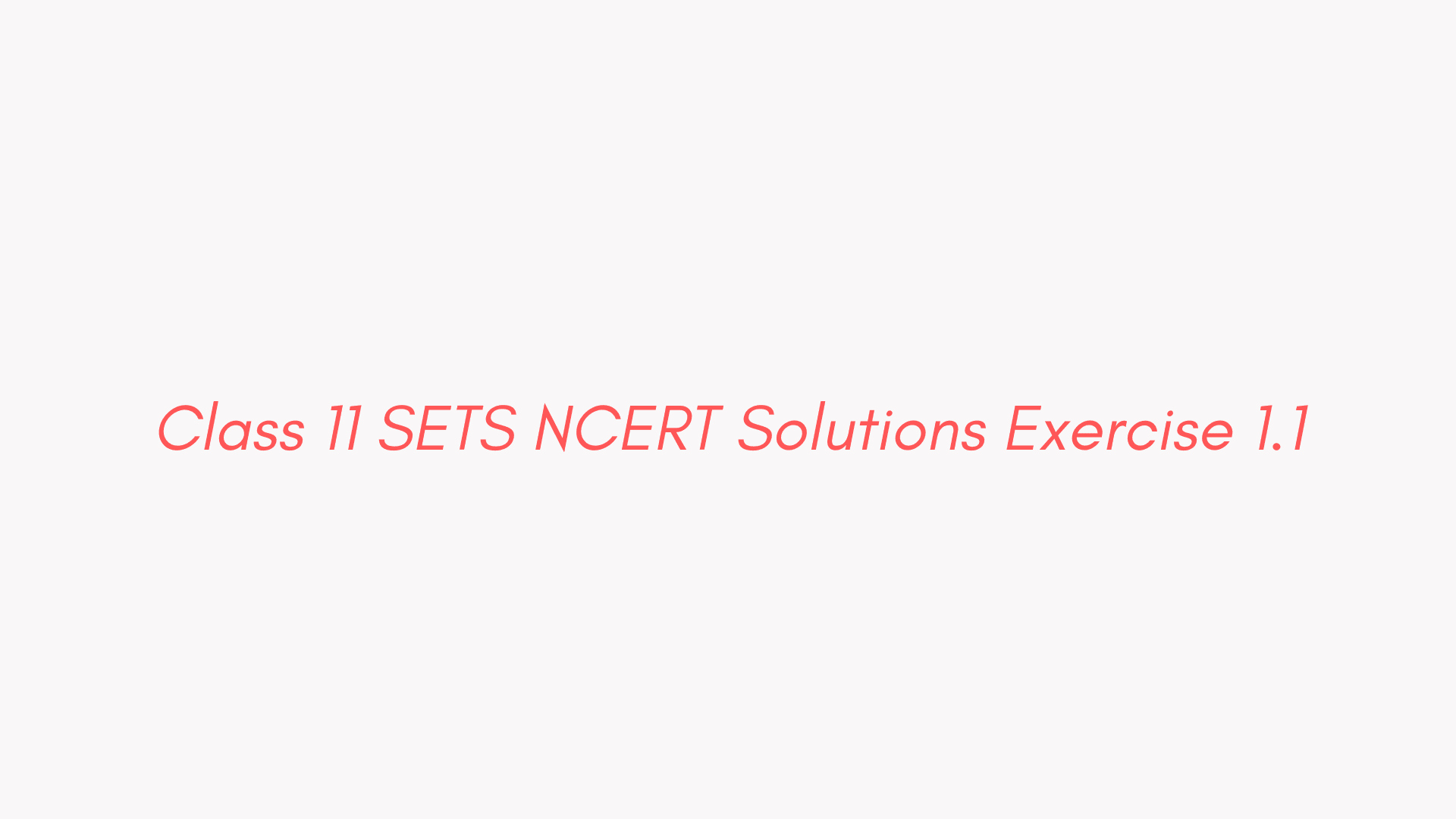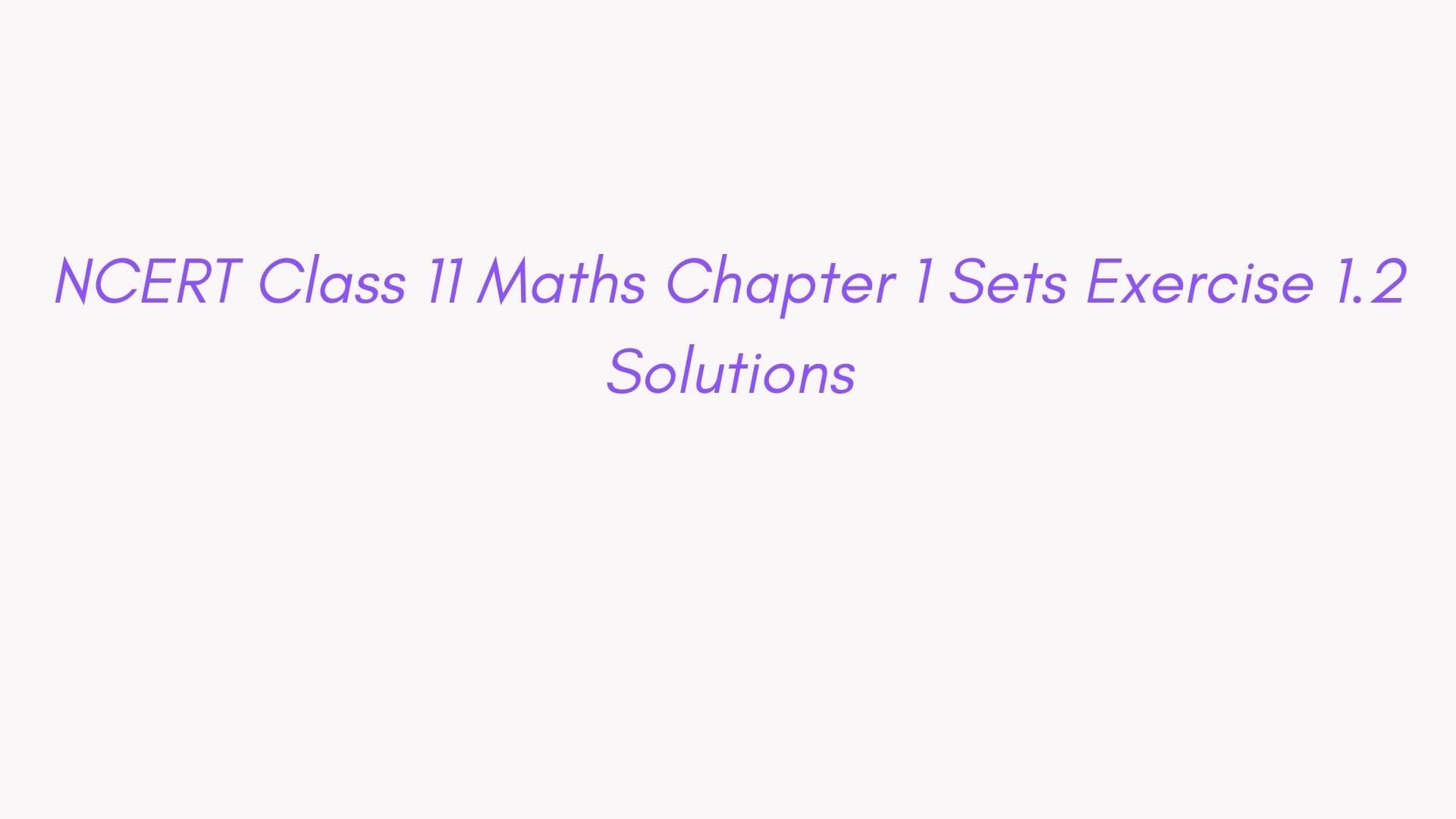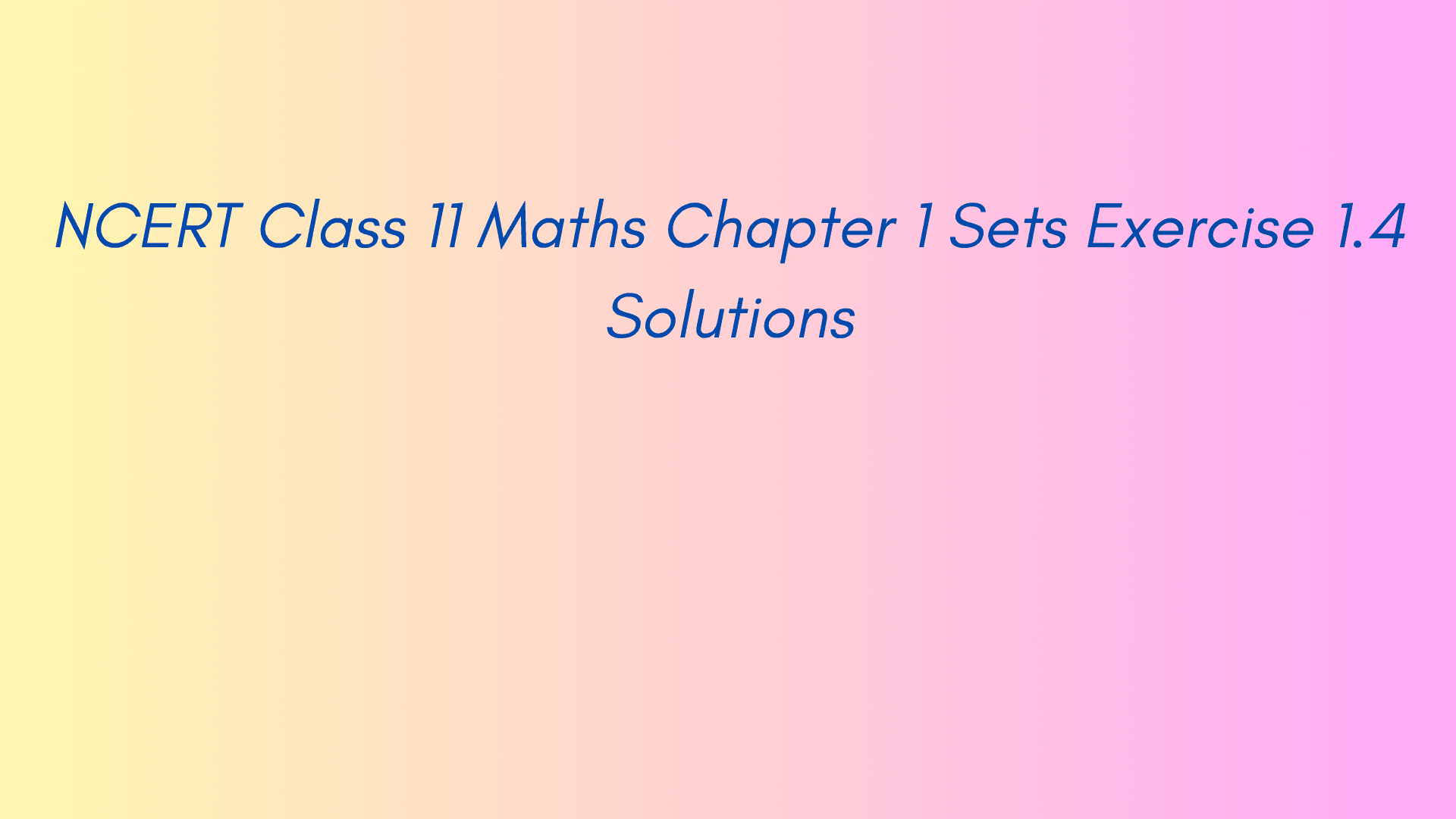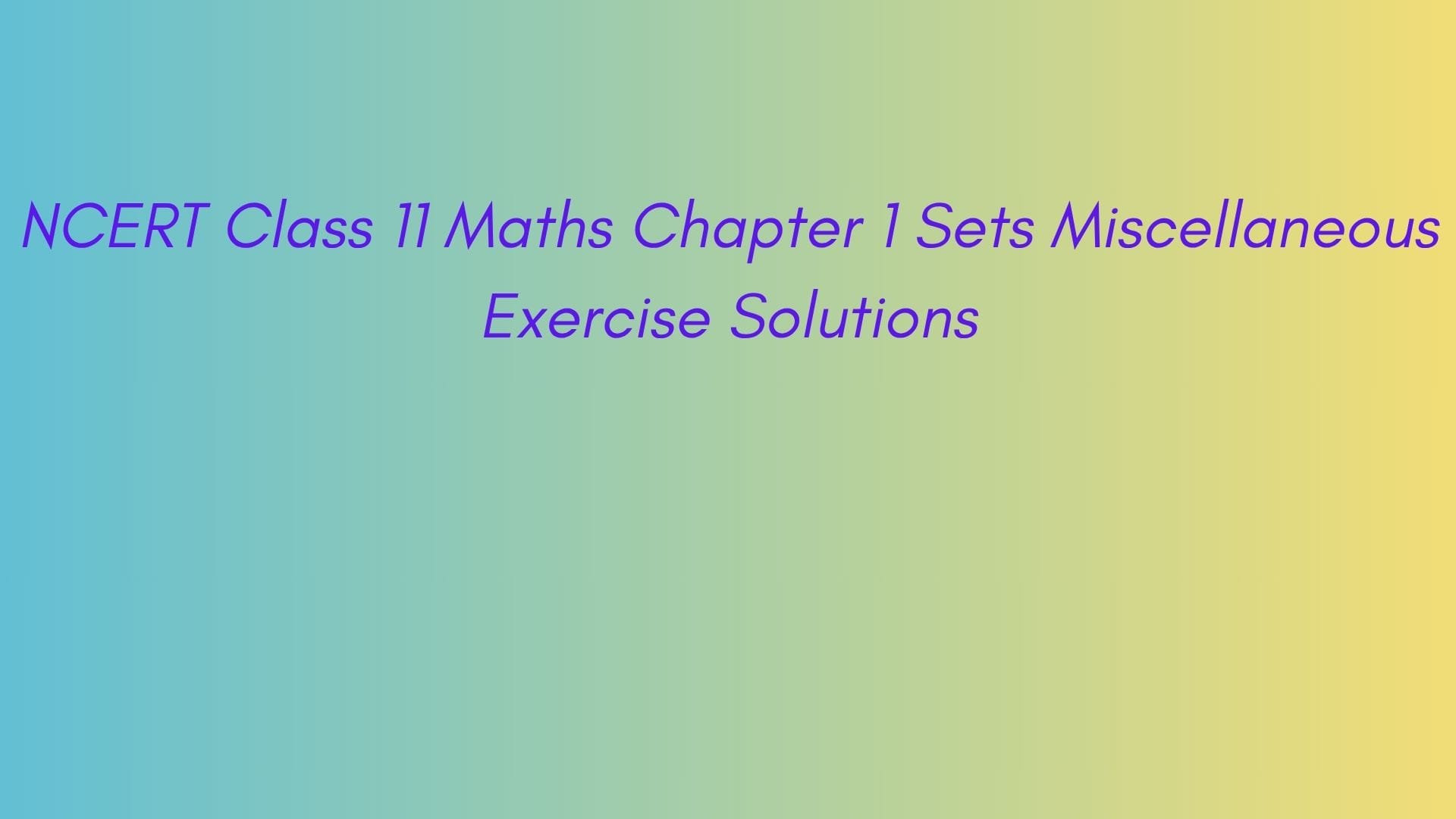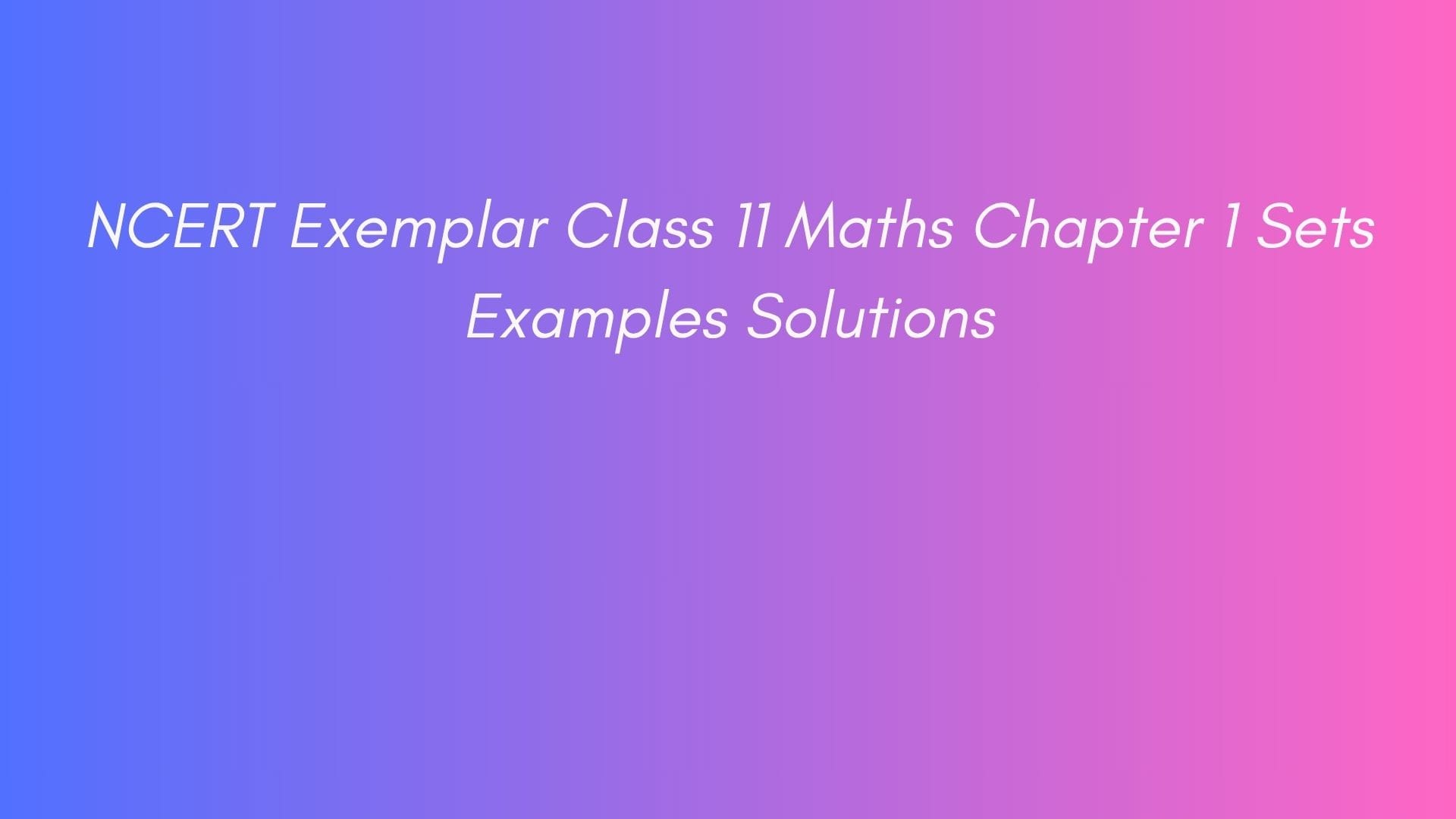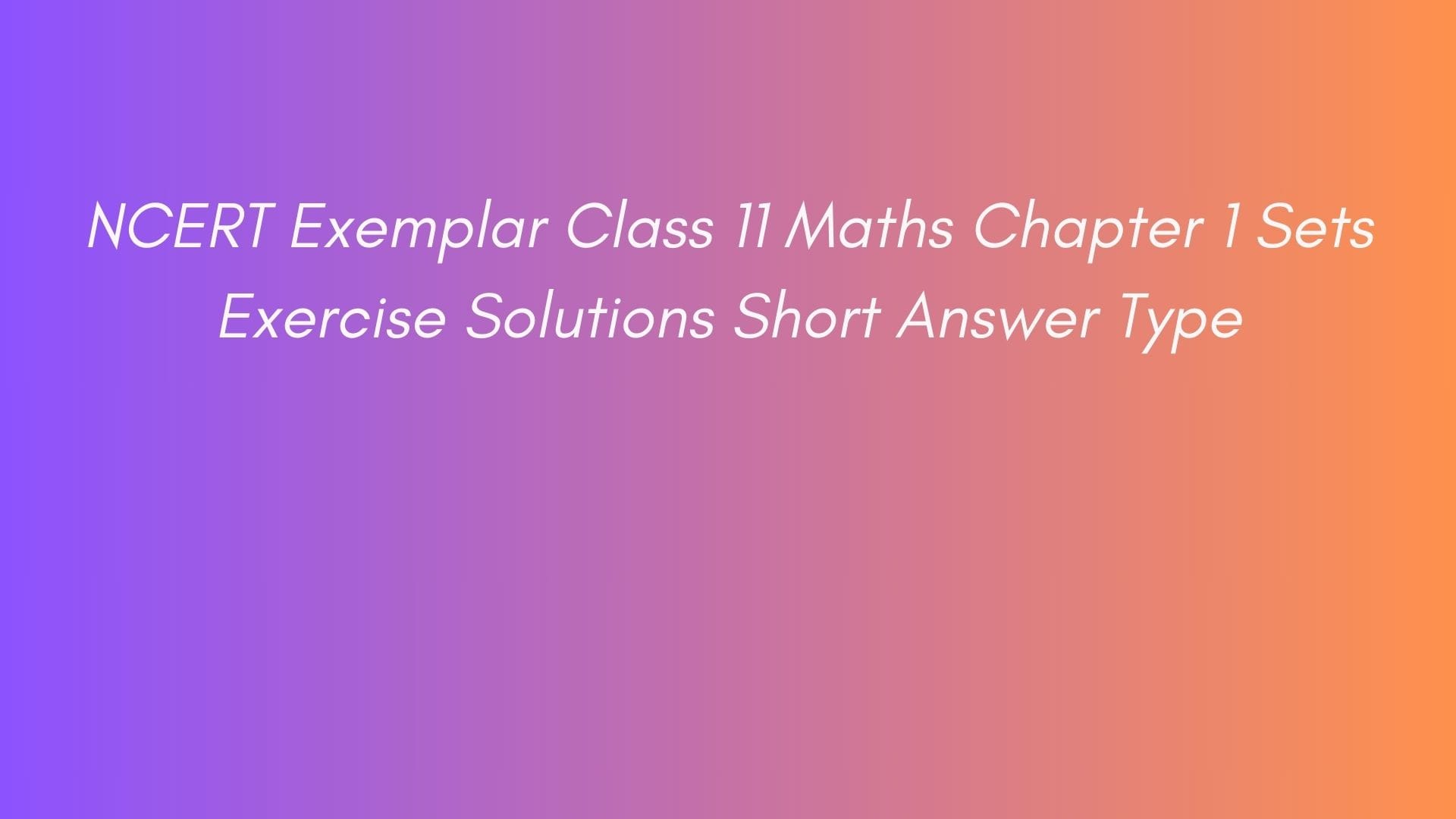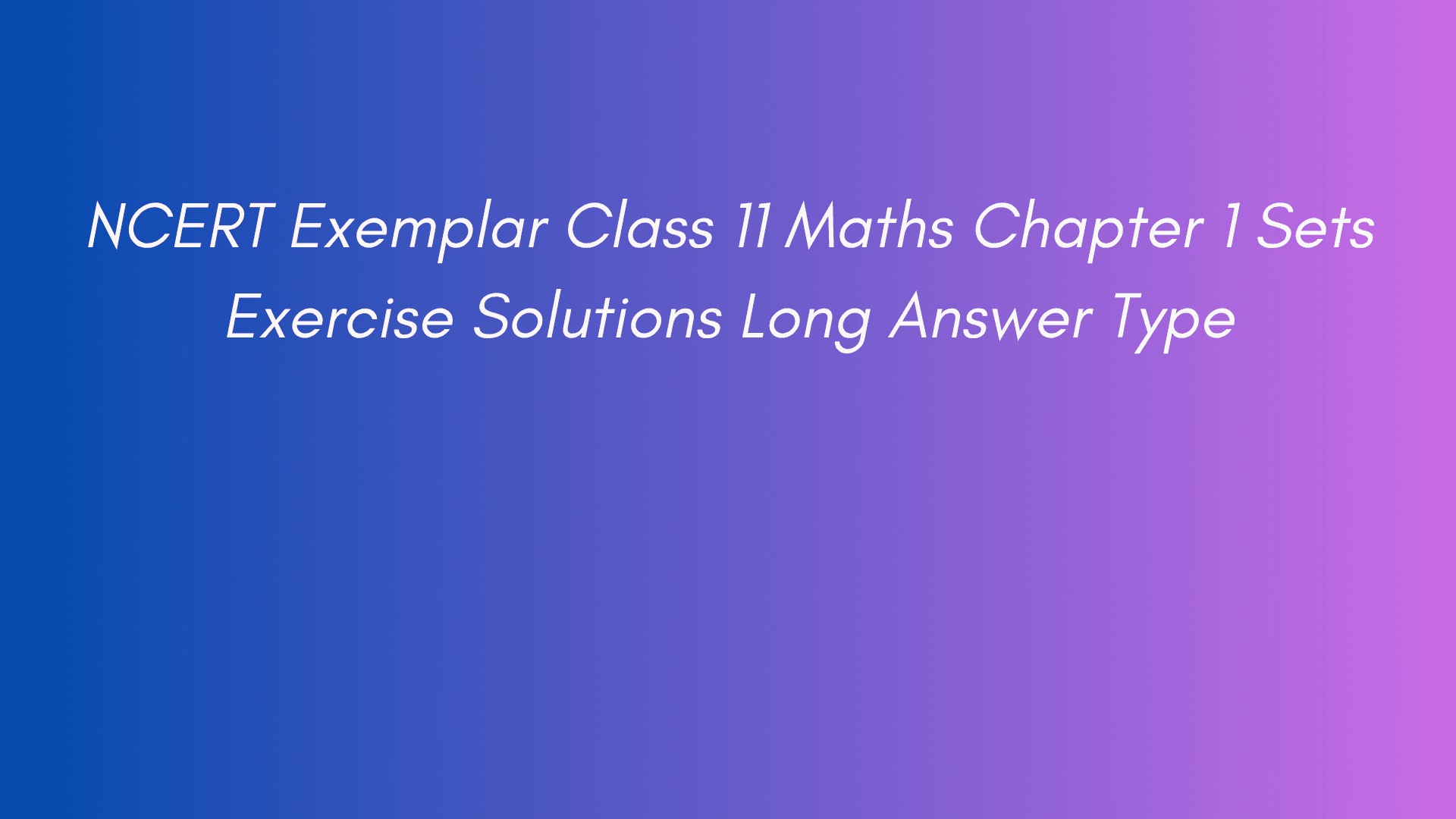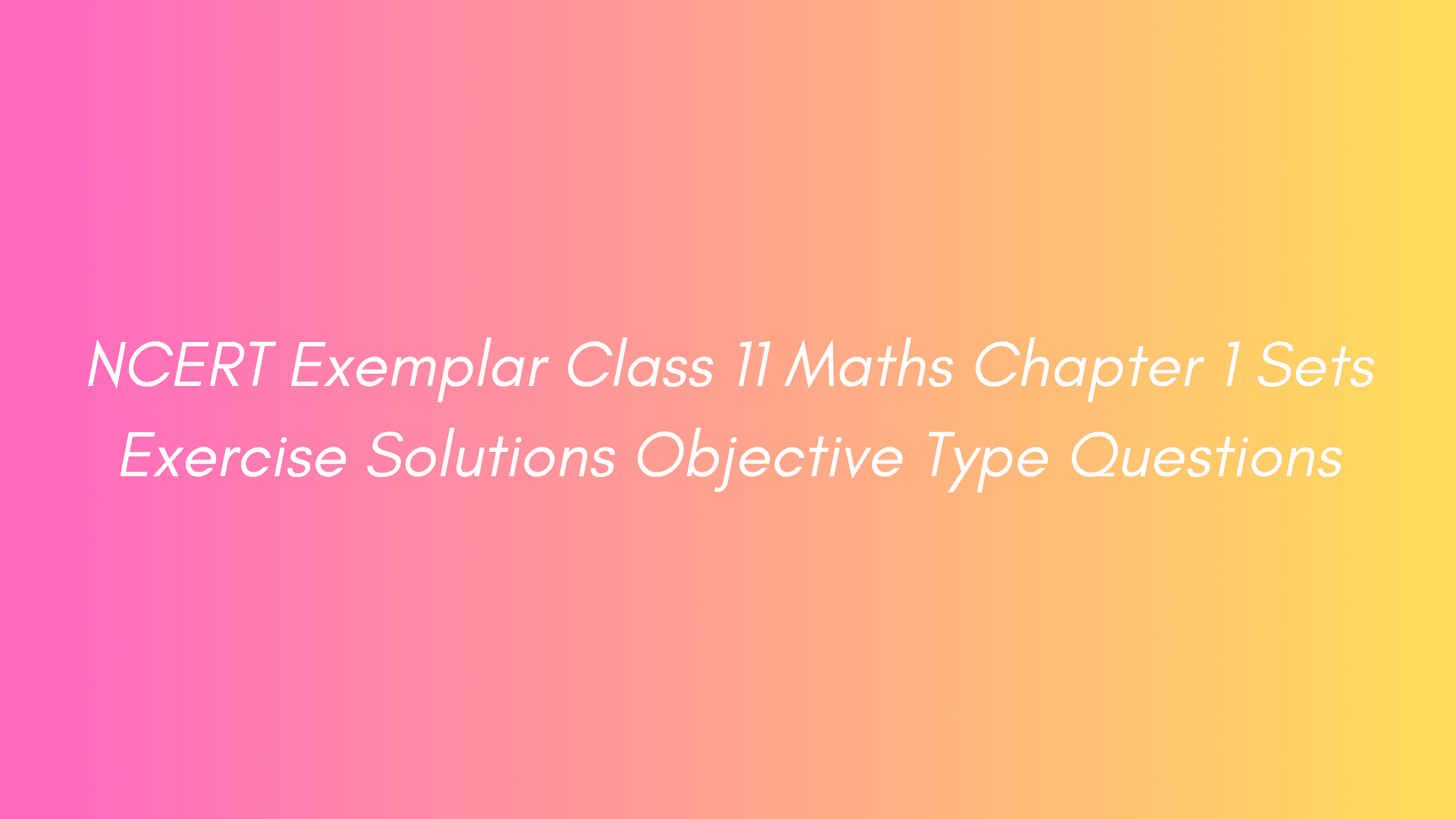Last Updated:
Written by : Anmol Gupta
17 mins read time
Learn about set theory concepts in Mathematics CBSE class 11 (1st puc) by unipolaris academy useful for school exams, JEE main and advanced exams.
Learn definitions, examples, representation of sets, types of sets, Venn diagrams, operations on sets and some formulas to solve practical problems.
Table of Contents – Class 11 Maths Chapter 1 Sets
Definition of Sets
A set is a well-defined collection of objects as we can definitely decide whether a given particular object belongs to a given collection or not.
For example, we can say that the river Nile does not belong to the collection of rivers of India. On the other hand, the river Ganga does belong to this collection.
The collection of five most renowned mathematicians of the world is not well-defined, because the criterion for determining a mathematician as most renowned may vary from person to person
Let’s say we have a set A defined as: A={apple, banana, mango}

The above image illustrates that we can clearly decide if an object (like “apple” or “grape”) belongs to set A, making it a well-defined collection.
Examples of Sets
- Odd natural numbers less than 10, i.e., 1, 3, 5, 7, 9
- The rivers of India
- The vowels in the English alphabet, namely, a, e, i, o, u
- Various kinds of triangles
- Prime factors of 210, namely, 2, 3, 5 and 7
- The solution of the equation: x2 – 5x + 6 = 0, viz, 2 and 3
- Symbols of special sets
- N : the set of all natural numbers
- Z : the set of all integers
- Q : the set of all rational numbers
- R : the set of real numbers
- Z+ : the set of positive integers
- Q+ : the set of positive rational numbers
- R+ : the set of positive real numbers
- T : Set of irrational numbers

Representation of Sets
Belongs to and not belongs to
- Objects, elements and members of a set are synonymous(words having same meaning) terms.
- Sets are usually denoted by capital letters A, B, C, X, Y, Z, etc.
- The elements of a set are represented by small letters a, b, c, x, y, z, etc
- The Greek symbol ∈ epsilon is used to denote the phrase ‘belongs to’
- If a is an element of a set A, we say that “a belongs to A”
- Thus, we write a ∈ A
- If ‘b’ is not an element of a set A, we write b ∉ A and read “b does not belong to A”
- Example: In the set V of vowels in the English alphabet, a ∈ V but b ∉ V
- In the set P of prime factors of 30, 3 ∈ P but 15 ∉ P as prime factors of 30 are 2, 3, 5
- A prime number is a number that can be divided exactly only by itself and 1. The prime factors of a number are the ‘prime numbers’ that are multiplied to get the original number.

Methods of representing a set


- There are two methods of representing a set :
- Roster or Tabular Form : In roster form, all the elements of a set are listed, the elements are being separated by commas and are enclosed within braces { }
- Example, the set of all even positive integers less than 7 is described in roster form as {2, 4, 6}
- The set of all natural numbers which divide 42 is {1, 2, 3, 6, 7, 14, 21, 42}
- In roster form, the order in which the elements are listed is immaterial, thus, the above set can also be represented as {1, 3, 7, 21, 2, 6, 14, 42}
- More examples :
- The set of all vowels in the English alphabet is {a, e, i, o, u}
- The set of odd natural numbers is represented by {1, 3, 5, . . .}. The dots tell us that the list of odd numbers continue indefinitely.
- While writing the set in roster form an element is not generally repeated, i.e., all the elements are taken as distinct.
- For example, the set of letters forming the word ‘SCHOOL’ is {S, C, H, O, L} or {H, O, L, C, S}. Here, the order of listing elements has no relevance.
- Set Builder Form : All the elements of a set possess a single common property which is not possessed by any element outside the set.
- For example, in the set {a, e, i, o, u}, all the elements possess a common property, namely, each of them is a vowel in the English alphabet, and no other letter possess this property
- We describe the element of the set by using a symbol x (any other symbol like the letters y, z, etc. could be used) which is followed by a colon “ : ”.
- After the sign of colon, we write the characteristic property possessed by the elements of the set and then enclose the whole description within braces.
- The description of the set V is read as “the set of all x such that x is a vowel of the English alphabet”: V = {x : x is a vowel in English alphabet}
- Another example, ‘the set of all x such that x is a natural number and x lies between 3 and 10’. A = {x : x is a natural number and 3 < x < 10}. The numbers 4, 5, 6, 7, 8 and 9 are the elements of the set A.
- Roster or Tabular Form : In roster form, all the elements of a set are listed, the elements are being separated by commas and are enclosed within braces { }
Empty Set
Definition : A set which does not contain any element is called the empty set or the null set or the void set.
- The empty set is denoted by the symbol φ or { }.
- Example :
- Let A = {x : 1 < x < 2, x is a natural number}. Then A is the empty set represented by A = φ or A = { } because there is no natural number between 1 and 2.

Number of elements of a set
By number of elements of a set S, we mean the number of distinct elements of the set and we denote it by n(S)
- Example: Let A = { 1,2,3,4,5 } then n(A) = 5

Finite and Infinite Sets
Definition : A set which is empty or consists of a definite number of elements is called finite otherwise, the set is called infinite.
- Example of finite set: Let W be the set of the days of the week. Then W is finite set
- Example of infinite set : Let G be the set of points on a line. Then G is infinite set
- Representation of infinite sets:
- It is not possible to write all the elements of an infinite set within braces { } because the numbers of elements of such a set is not finite.
- So, we represent some infinite set in the roster form by writing a few elements which clearly indicate the structure of the set followed ( or preceded ) by three dots.
- Example: {1, 2, 3 . . .} is the set of natural numbers, {1, 3, 5, 7, . . .} is the set of odd natural numbers, {. . .,–3, –2, –1, 0, 1, 2 , 3, . . .} is the set of integers.
- All infinite sets cannot be described in the roster form. For example, the set of real numbers cannot be described in this form, because the elements of this set do not follow any particular pattern.
Equal Sets
Definition : Two sets A and B are said to be equal if they have exactly the same elements and we write A = B. Otherwise, the sets are said to be unequal and we write A ≠ B.
- Given two sets A and B, if every element of A is also an element of B and if every element of B is also an element of A, then the sets A and B are said to be equal.
- Example:
- Let A = {1, 2, 3, 4} and B = {3, 1, 4, 2}. Then A = B

Subsets

Definition : A set A is said to be a subset of a set B if every element of A is also an element of B
- The symbol ⊂ stands for ‘is a subset of’ or ‘is contained in’
- A ⊂ B if whenever a ∈ A, then a ∈ B. It is convenient to use the symbol “⇒” which means implies. Using this symbol, we can write the definition of subset as follows: A ⊂ B if a ∈ A ⇒ a ∈ B
- We read the above statement as “A is a subset of B if a is an element of A implies that a is also an element of B”. If A is not a subset of B, we write A ⊄ B.
- If it so happens that every element of B is also in A, then we shall also have B⊂A. In this case, A and B are the same sets so that we have A ⊂ B and B ⊂ A ⇔ A = B, where “⇔” is a symbol for two way implications, and is usually read as if and only if (briefly written as “iff”)
- Every set A is a subset of itself, i.e., A ⊂ A. Since the empty set φ has no elements, we agree to say that φ is a subset of every set
- Example:
- If A is the set of all divisors of 56 and B the set of all prime divisors of 56, then B is a subset of A and we write B ⊂ A
- Let A and B be two sets. If A ⊂ B and A ≠ B , then A is called a proper subset of B and B is called superset of A. For example, A = {1, 2, 3} is a proper subset of B = {1, 2, 3, 4}
- If a set A has only one element, we call it a singleton set. Thus, { a } is a singleton set
- If you’re studying under NCERT/CBSE, it’s important to understand how the subset symbol is used:
- The symbol ⊂ is used in NCERT textbooks (like Class 11 Maths) to mean “subset“.
- That is:
A ⊂ Bmeans every element of A is also in B. It can include the case when A = B. - NCERT does not use a separate symbol for “proper subset” (where A is strictly smaller than B). So ⊂ in NCERT can mean either: A is a proper subset of B (A ≠ B) OR A is equal to B (A = B)
- In contrast, in higher-level mathematics or international boards:
The symbols are used more precisely:
⊆ means subset (A may or may not be equal to B)
⊂ means proper subset only (A is strictly smaller than B, i.e., A ≠ B)
Subsets of set of real numbers
N ⊂ Z ⊂ Q, Q ⊂ R, T ⊂ R, N ⊄ T
Intervals as subsets of R

- Let a, b ∈ R and a < b. Then the set of real numbers { y : a < y < b} is called an open interval and is denoted by (a, b). All the points between a and b belong to the open interval (a, b) but a, b themselves do not belong to this interval.
- The interval which contains the end points also is called closed interval and is denoted by [ a, b ]. Thus [ a, b ] = {x : a ≤ x ≤ b}.
- We can also have intervals closed at one end and open at the other, that is, [ a, b ) = {x : a ≤ x < b} is an open interval from a to b, including a but excluding b. ( a, b ] = { x : a < x ≤ b } is an open interval from a to b including b but excluding a.
- If A = (–3, 5) and B = [–7, 9], then A ⊂ B
- The set [ 0, ∞) defines the set of non-negative real numbers, while set ( – ∞, 0 ) defines the set of negative real numbers. The set ( – ∞, ∞ ) describes the set of real numbers in relation to a line extending from – ∞ to ∞
- For example, the set {x : x ∈ R, –5 < x ≤ 7}, written in set-builder form, can be written in the form of interval as (–5, 7] and the interval [–3, 5) can be written in set builder form as {x : –3 ≤ x < 5}
- The number (b – a) is called the length of any of the intervals (a, b), [a, b], [a, b) or (a, b]
Universal Set
- A universal set is a set that contains all the elements under consideration for a particular discussion or problem. It is often denoted by the symbol U
- The universal set is usually denoted by U, and all its subsets by the letters A, B, C, etc.
- For example, for the set of all integers, the universal set can be the set of rational numbers or, for that matter, the set R of real numbers.
- For another example, in human population studies, the universal set consists of all the people in the world.
Venn Diagrams
Relationships between sets can be represented by means of diagrams which are known as Venn diagrams
- Venn diagrams consist of rectangles and closed curves usually circles
- The universal set is represented usually by a rectangle and its subsets by circles
- The elements of the sets are written in their respective circles

Union of Sets

- Let A and B be any two sets. The union of A and B is the set which consists of all the elements of A and all the elements of B, the common elements being taken only once.
- The union of two sets A and B is the set C which consists of all those elements which are either in A or in B (including those which are in both)
- In symbols, we write, A ∪ B = { x : x ∈ A or x ∈ B }, the word “or” means either one or both
- So, an element x is in the union A ∪ B if :
- x is in set A,
- or x is in set B,
- or x is in both A and B
- In mathematics, “or” is usually interpreted as an inclusive or, not exclusive. That means x doesn’t have to be only in one of the sets—it can be in both
- Example: Let X = {Ram, Geeta, Akbar} be the set of students of Class XI, who are in school hockey team. Let Y = {Geeta, David, Ashok} be the set of students from Class XI who are in the school football team. X ∪ Y = {Ram, Geeta, Akbar, David, Ashok}. This is the set of students from Class XI who are in the hockey team or the football team or both.
- Some Properties of operation of union:
- Commutative law : A ∪ B = B ∪ A
- Associative law : ( A ∪ B ) ∪ C = A ∪ ( B ∪ C)
- Law of identity element ( φ is the identity of ∪ ) : A ∪ φ = A
- Idempotent Law : A ∪ A = A
- Law of U : U ∪ A = U
Intersection of Sets

- The intersection of sets A and B is the set of all elements which are common to both A and B
- The intersection of two sets A and B is the set of all those elements which belong to both A and B
- The symbol ‘∩’ is used to denote the intersection
- Symbolically, we write A ∩ B = {x : x ∈ A and x ∈ B}
- If A and B are two sets such that A ∩ B = φ, then A and B are called disjoint sets

- Some Properties of operation of intersection:
- Commutative law : A ∩ B = B ∩ A
- Associative law : ( A ∩ B ) ∩ C = A ∩ ( B ∩ C )
- Law of φ and U : φ ∩ A = φ, U ∩ A = A
- Idempotent Law : A ∩ A = A
- Distributive Law :
- A ∩ ( B ∪ C ) = ( A ∩ B ) ∪ ( A ∩ C )
- A ∪ ( B ∩ C ) = ( A ∪ B ) ∩ ( A ∪ C )
Difference of Sets
The difference of the sets A and B in this order is the set of elements which belong to A but not to B. Symbolically, we write A – B and read as “A minus B”

- A – B = { x : x ∈ A and x ∉ B }
- The sets A – B, A ∩ B and B – A are mutually disjoint sets, i.e., the intersection of any of these two sets is the null set
Complement of a Set
Let U be universal set and A subset of U, then A’ = U – A

- A’ = { x : x ∈ U and x ∉ A }, complement of set A is set of all elements of U which are not elements of A
- Some Properties of Complement Sets:
- Complement Laws:
- A ∪ A′ = U
- A ∩ A′ = φ
- De Morgan’s Law:
- (A ∪ B)´ = A′ ∩ B′
- (A ∩ B)′ = A′ ∪ B′
- Law of double complementation : (A′)′ = A
- Laws of empty set and universal set : φ′ = U and U′ = φ
- Complement Laws:
Power Set
The collection of all subsets of set A is called the power set of A denoted by P(A)
- If number of elements in A is n, that is, n(A) = n, then number of elements in P(A) = 2n
Formulae to solve practical problems on union and intersection of two sets
- Let A, B, C be any finite sets. Then :
- n(A∪B) = n(A) + n(B) – n(A ∩ B)
- If (A ∩ B) = φ, then n(A∪B) = n(A) + n(B)
- n(A∪B∪C) = n(A) + n(B) + n(C) – n(A ∩ B) – n(A ∩ C) – n(B ∩ C) + n(A ∩ B ∩ C)
FAQs related to Set theory in class 11
What is the fundamental of set theory?
Set theory is the study of sets, which are well-defined collections of distinct objects. It forms the foundation of modern mathematics.
Sets can be represented in roster or set-builder form and classified as finite, infinite, empty, subset, or universal sets. Basic operations include union, intersection, difference, and complement.
These are often visualized using Venn diagrams. Key laws such as commutative, associative, distributive, and De Morgan’s laws govern set operations.
The number of elements in a set is called its cardinality. Set theory provides the basis for understanding relations, functions, and logic in mathematics.
What are the important laws of sets?
The important laws of sets include the commutative laws, associative laws, and distributive laws, which govern how sets interact under union and intersection.
Other fundamental laws are the identity laws, domination laws, idempotent laws, and complement laws.
Additionally, the double complement law, involution law, and De Morgan’s laws play a key role in simplifying set expressions and solving set-related problems.

